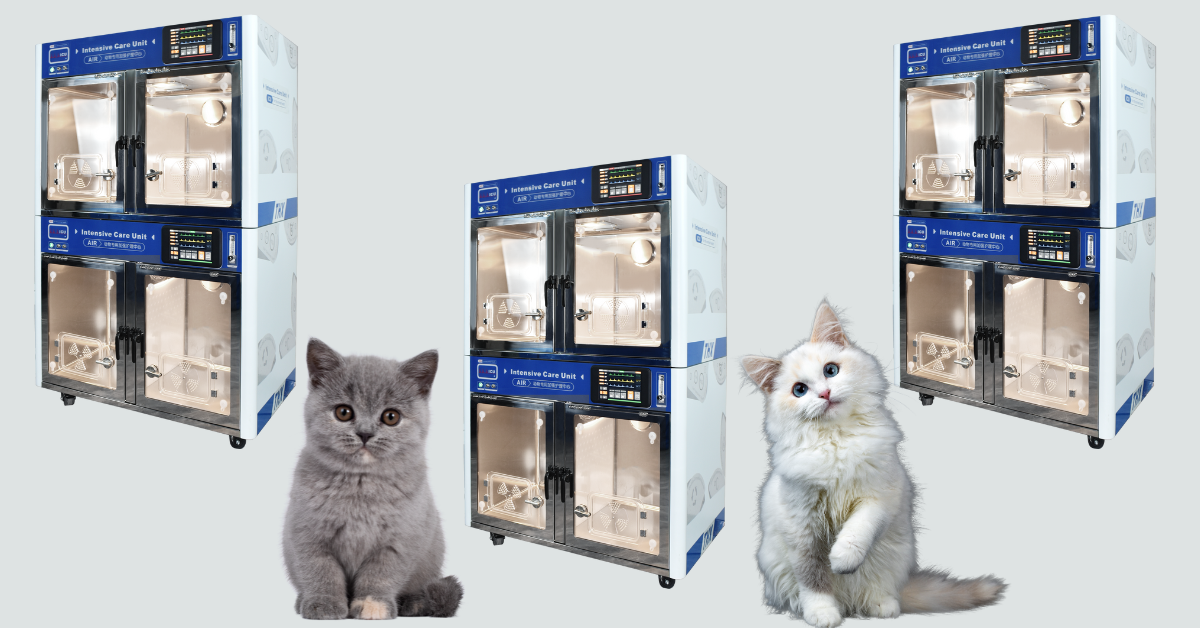3 Reasons Why ICU Cages are Critical to Veterinary Recovery
Unsurprisingly, ICU (intensive care unit) cages have gained popularity in veterinary hospitals and are slowly being considered a standard part of inpatient care.
The rate of pet ownership continues to experience steady growth, resulting in a rising demand for veterinary care and services.
Veterinary ICUs, specialty & emergency hospitals, and general practices have expanded hospital treatment areas to accommodate ICU cages and support the incoming demand.
Market research indicates that ICU cage popularity will continue to grow due to their crucial role in providing intensive care to ill, injured, or post-operative patients.
With a controlled environment for monitoring and supportive care, ICU cages are the ideal stress-free environment for patients to recover comfortably.
Let’s take a look at three main reasons ICU cages are so critical to veterinary recovery.
#1 Convenient Patient Monitoring and Supportive Care for Inpatients
There is no “one-size-fits-all” approach to monitoring and supportive care, and it’s safe to say you can never have too much.
Age, weight, disease process, pain profile, and other factors can vary the level of supportive care our patients need.
To be cautious, monitoring should continue even after the patient is considered " normal.”
ICU Cages offer:
Soft, close, clear plastic doors for easy visual observation
3-1 lighting systems with adjustable brightness for exams, observation, and therapy
Silent air systems for quiet oxygen therapy
Built-in IV support and Nebulizer
#2 Comfortable Anesthetic Recovery
Since post-anesthetic recovery isn’t always straightforward, diligent monitoring can reduce the risk of complications.
Anesthesia (and surgical procedures) can profoundly impact a patient’s thermoregulatory system. Small changes in a patient’s body temperature can encourage recovery or harm cellular and tissue function.
Hypothermia following an anesthetic procedure is one of the most common complications found in canines and felines.
ICU cages use an active warming approach in a temperature-controlled environment, which reduces the risk of hypothermia and helps to increase recovery times.
#3: Providing the Best Standard of Care
Now more than ever, pet parents are willing to seek advanced diagnostic and treatment options for the best possible care.
With a growing awareness of advanced veterinary medicine, please ensure your practice has the best supportive equipment for your incoming patients.
Your patients and clients deserve the peace of mind of knowing your practice offers housing geared toward safety and comfort.
This will allow your team to provide hassle-free observation and monitoring for each patient.
Learn More - What Does An ICU Cage Unit Do For A Critical Pet Patient? https://newvetequipment.com/blog/what-does-an-icu-cage-unit-do-for-a-critical-pet-patient



